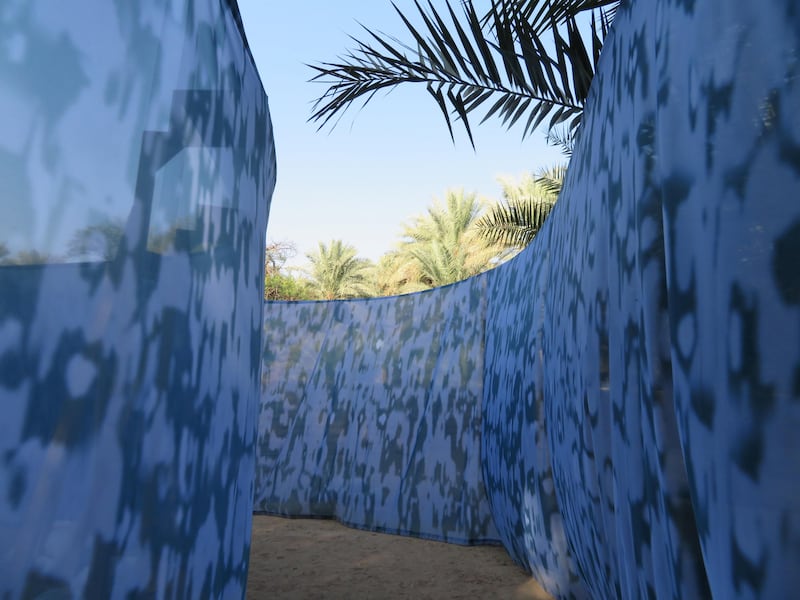Fabric sways under palm trees in the Al Ain Oasis. A rotating machine combs the sand in Al Jahili Fort. Lights flash in an enclosed space within Manarat Al Saadiyat.
These are the new artworks that have been commissioned and funded by Abu Dhabi Art this year.
While the fair has always sown art across the city, its reach goes all the way to Al Ain this year, almost 200 kilometres away.
“We have such amazing international visitors,” says Dyala Nusseibeh, the fair’s new director. “We wanted to show them our important historical sites, and to activate and connect those places in new ways.”
She invited Saudi artist Manal Al Dowayan, currently based in London; Nasser Al Salem, also from Saudi and based in Jeddah; and Magdi Mostafa, from Cairo, to create installations that refer to iconic Abu Dhabi locations, such as the Unesco world heritage site of the Al Ain Oasis, or rapidly urbanising Saadiyat Island.
Each of the artists delved into the history embedded in their sites, while also acting as a force of change upon it: representing the twinned dynamics – tradition and transformation – that exemplify Abu Dhabi.
All three will remain on show until January 27, 2018, long after the fair closes.
Manal Al Dowayan / The Witness
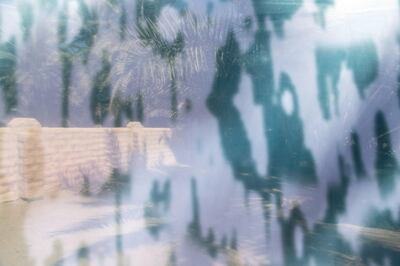
“The Al Ain oasis has been there for 3,000 years,” says Manal Al Dowayan. “What has it witnessed?”
Nestled within the Al Ain Oasis, under the interwoven canopy of ridged palm leaves, Al Dowayan turns her audience’s attention downwards: deep into the soil where palm trees have their roots.
Here, the Saudi artist reveals the unseen, inspired by how the palm trees – amazingly – use their roots to communicate information about disasters or disease, and share food and nourishment among one another.
To create the work, Al Dowayan made images of the trees’ roots using ground-penetrating scanners – the kind used in construction to check for underground pipes and electricity cables before digging.
“I was expecting to find typical roots – squiggly and separated lines,” she says. “But instead they look like dreadlocks gone frizzy. They’re completely dense.”
It was impossible to tell what root belonged to what tree, which was fitting, as Al Dowayan realised they worked as a community, rather than serving one individual plant.
For her installation, You Are From Me and I Am From You (2017), she has created the sensation of being underground.
Long walls are made of a fabric onto which she printed a drawing of some of the oasis’s oldest palm tree roots. The visitor walks between a widening corridor created by these walls, simulating a journey upwards from the thick and dark network of roots.
“I wanted the visitor to have an experience,” she says.
The work is part of Al Dowayan’s investigations into what is hidden and what is kept on view, which the Saudi artist often situates in relation to the status of Arab women.
In the project Esmi (My Name, 2012) she addressed the Saudi taboo against speaking the names of women aloud. She invited women to events in different cities across the kingdom, and asked each to write her name on a worry bead, from which she made installations of large hanging strands (one of these is on view at the fair at Cuadro Fine Art Gallery). She has 300 beads so far, and, she says of the events, “more women came than we had space for”.
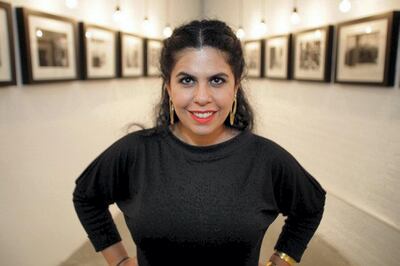
Another project questioned what this taboo means for family memory. “When do women disappear from collective memory?” she asks. “Their names are part of an oral history. If a person dies, she takes with her two or three names that only she remembers.”
To find an answer, she asks people to trace their family history back along matrilineal lines, often realising they can only go back a few generations. She repeated this project at the fair as part of the education programme, in the workshop The Invisible Woman earlier this week.
Al Dowayan’s Al Ain artwork similarly responds to the fact that what is remembered and what is forgotten is culturally determined.
“I love the attempt of humans to fight against the act of forgetting,” she relates. “Why grasp and hold onto everything – our attempts at preserving, leaving a trace, scratching onto rocks, writing on paper. Here I create a moment to contemplate that we are nothing, and to appreciate that there is an unseen universe, and that there is a witness. It might be some comfort to know there are witnesses to our traces.”
Nasser Al Salem / The Sage
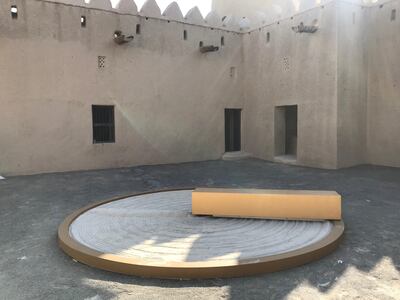
"I wanted to make a universal artwork," says Nasser Al Salem, about Yuheb (2017), his commission for Abu Dhabi Art. "I gave it a spiritual element. Everyone understands love and war."
Al Salem’s project is found in Al Jahili Fort, the military site erected in 1891 to protect Al Ain city.
He devised a machine, installed in the courtyard of this site, that demonstrates how war and love are intertwined.
“I was inspired by the well-known saying of the Prophet,” he says. “You will never be a true believer unless you love for your brother what you love for yourself.
“It made me think of all the wars that stem from love – love for power, for family, for country, for money. I wanted to open up a dialogue into this contradictory concept.”
Al Salem’s work rakes the sand in a circular platform. Attached to the long rotating arm are four combs: three scratch out the geometry of the Arabic letters for yuheb, meaning to love. A fourth comb, with sad inevitability, then erases the word.
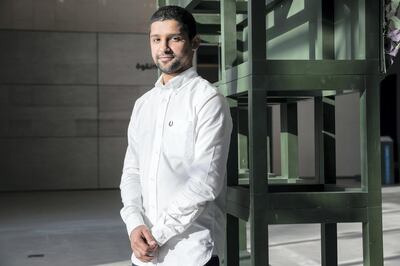
The colour of the sand echoes the surrounding low buildings of the original fort, which have now been converted into a cultural centre: from war to art, just like what the whirring machine enacts on the ground.
The letters are scratched out and then erased in one continuous process. “I wanted it to say ‘yuheb’, or the present tense of ‘to love’,” Al Salem explains. “It’s about the constant act of love. That’s also why I wanted to use a machine: so that it was automated, and could continue 24 hours a day.”
Al Salem often brings calligraphy into unusual or surprising contexts.
He was trained as an architect, and shows the rich intersection between calligraphy and architectural constructions.
“They are very similar,” he says. “The rules and regulations, the importance of ratios, the focus on geometry – these are found in both. Just the execution is different.”
Magdi Mostafa / The Alchemist
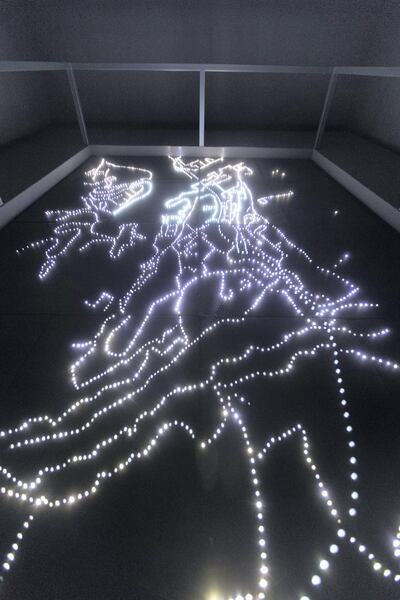
What is the energy of a place? How do we describe what we don’t see of a place, but what we feel?
The Egyptian artist Magdi Mostafa has tried to do just that: to take stock of the energy of a site, and then represent it to others.
In 2014 he made a map of his native Cairo – a loud, chaotic city – in which he abstracted the energy of the city in strings of lights and snatches of captured sounds.
Nusseibeh invited him to do the same for Saadiyat Island, a place that has been remarkably changed by new hotels, villas, schools, and landscaping in the last five years.
In The Surface of Spectral Scattering he has created a map of the island that shows the energy he senses within it.
“Abu Dhabi is calm on the surface, but you can feel the noise of the economy and business,” he says. “It’s the noise of ambition. It’s not something you can easily observe, but you can feel the energy of the people as they drive in their cars.
“There is a sort of rush inside, especially for labourers and business people – people who come from Europe.
“Not the locals,” he laughs. “They are more relaxed.” Tucked away inside a grey construction within Manarat Al Saadiyat, Mostafa has brought these observations – literally – to light. Viewers peer over his map of the island, ring-fenced behind wooden rails, where pockets of light signal high energy locations.
The lights have been sewn onto the surface by Egyptian embroiderers who manipulated the wire “as if it were thread”, Mostafa says. The bulbs too have been hand soldered.
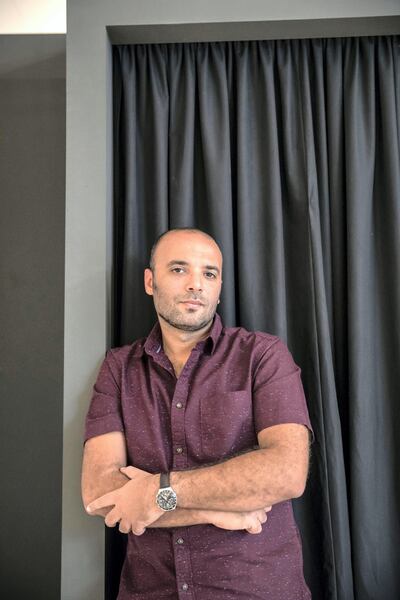
“Otherwise it would look like a computer motherboard or something that is really artificial,” explains Mostafa of these craft techniques.
“It looks high-tech, it looks automatic, but I keep the human energy that is responsible for building the cities. Because cities are not built by computers – they’re organised, but still chaos.”
Mostafa’s work is part of the Art + Technology strand initiated by the fair this year, which engages students from science, math, and engineering backgrounds in the production of art.
Mostafa and three other artists invited by the fair – Abdulnasser Gharem, Feng Mengbo, and Random International – collaborated with students at Khalifa University in weeklong workshops.
“I found them very open and eager to learn something new,” he says.
“We spoke about the idea of ‘audio culture’ and how it changes over time.”
The aural component of The Surface of Spectral Scattering is just as important to the work as its visual element; the artist works both as a visual artist and in sound art, often performing live.
For his Abu Dhabi Art commission he recorded the soundtrack on Saadiyat Beach, with some sounds of the waves at Alexandria spliced in. The sea at Saadiyat, he admits, was too calm.
__________________
Read more:
[ What to expect at Abu Dhabi Art 2017 ]
[ Life becomes art for artist in bunny head ]
[ Abu Dhabi Art 2017: Key performance events ]
__________________
